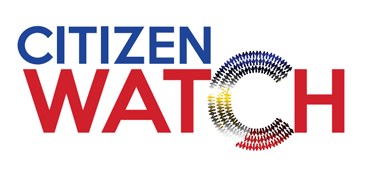Sanctions and blame games won’t stop child porn
February 15, 2021by Orlando Oxales originally published in The Manila Standard
“It is a societal malady that needs commitment from all sectors.”
The arrest of Filipinos exploiting their own children to engage in online pornography sparked another knee-jerk reaction from the President to impose sanctions on telcos and internet service providers (ISPs) for failing to stop online child pornography.
The National Telecommunications Commission has been directed to impose sanctions on ISPs “for failure to fulfill their duty” under Republic Act 9775 or the Anti-Child Pornography Act of 2009. 47 ISPs are accused of negligence and were directed to explain their non-compliance.
At the same time, legislators have been directed to prioritize bills that would exempt trafficking of persons from the Anti-Wiretapping Law, expand the inter-agency council on child pornography, and impose more obligations on ISPs and tourism establishments to fight child pornography.
Here we go again with yet another blame game that merely misdirects attention instead of engaging in deep focus to effectively address a serious societal scourge that has embedded itself online to propagate its evil business.
The typical public policy thought process is linear and regulatory by nature which has proven to be least effective in the dynamic creation and on-demand accessibility of online content. Yes, online child-porn is like any digital content that can be easily produced with some savviness and creativity. Online payment platforms and messaging apps have become powerful tools for child pornography and sex trafficking.
In fairness, Globe Telecom for its part has so far invested US$2.7 million in their content filtering system which logged a total of 2,521 domains with child porn related content as part of its ‘PlayItRight’ advocacy program targeting online child pornography and illegal content. PLDT and Smart Communications reported blocking 3,030 child porn related sites and invested P2 billion this year in their advanced cybersecurity operations center.
Having the technology to hunt down and purge illegal content is a big step but will not stop the canny tech mercenaries of these porn sites because of how the internet was actually designed, to make it impossible to cut the exchange of data in the event of war.
Having the right and consistent policies in place is key, but the two telcos Globe Telecom and PLDT-Smart point out conflicting provisions between the Anti-Child Pornography and the Data Privacy Act. Apparently, the directive to identify and report child-pornography or other sites instigating terrorism, disinformation, and piracy, needs a clear empowerment of ISPs to see the content that their subscribers are uploading or accessing. This means allowing ISPs to monitor a user’s online activities to the extent of violating one’s privacy.
However, allowing ISPs to do this, which is technically possible, is in itself a scary scenario where whoever wields this power can do so much damage. You wouldn’t want anyone to be snooping around your email, web surfing habits, or your financial transactions, would you?
The telcos and ISPs know that fighting child pornography cannot be won by a technology war. It is a societal malady that needs an all-sectoral commitment, a systems-based approach versus the tendency to chase after harmful content because of the overwhelming amount of offensive material out there.
Globe Telecom has engaged in reporting Online Sexual Exploitation and Abuse of Children (OSAEC), advocacies with global organizations such as UNICEF, and the Digital Thumbprint Program espousing responsible behavior, overall online wellness, responsible digital citizenship, critical thinking, and prevention of online abuse. This has been integrated in the K-to-12 curriculum of public and private schools.
PLDT and Smart have been collaborating with law enforcement agencies on which sites to block as part of their open-source threat gathering and is a member of the UK-based Internet Watch Foundation dedicated to eliminating online child abuse content.
The world’s biggest social media platform, Facebook, has likewise been working with government and law enforcement agencies, global and local NGOs, academics, and experts to develop the best policies, build tools, and create safety resources and programs. They constantly gather feedback from 500 safety organizations and offer digital literacy programs to empower communities. Policies to protect children are continuously refined to keep pace with evolving online behavior. They have zero-tolerance for any child sexual exploitation content. New technologies like AI, machine learning, and computer vision are used to detect bad content. Live streaming videos violating community standards are stopped as soon as reported. All these and more interventions require a global team operating 24 by 7.
Microsoft and Google with their technology have been gaining ground in blocking child porn from their search engines – but this is an ongoing cyberwar.
Fighting OSEAC requires a global collaboration against a social pandemic that threatens to destroy the moral fabric of human society. Threatening ISPs with sanctions and more regulations is misdirected energy and resources that should instead be focused on the real perpetrators of child pornography.
